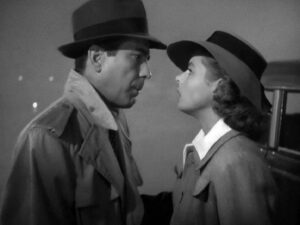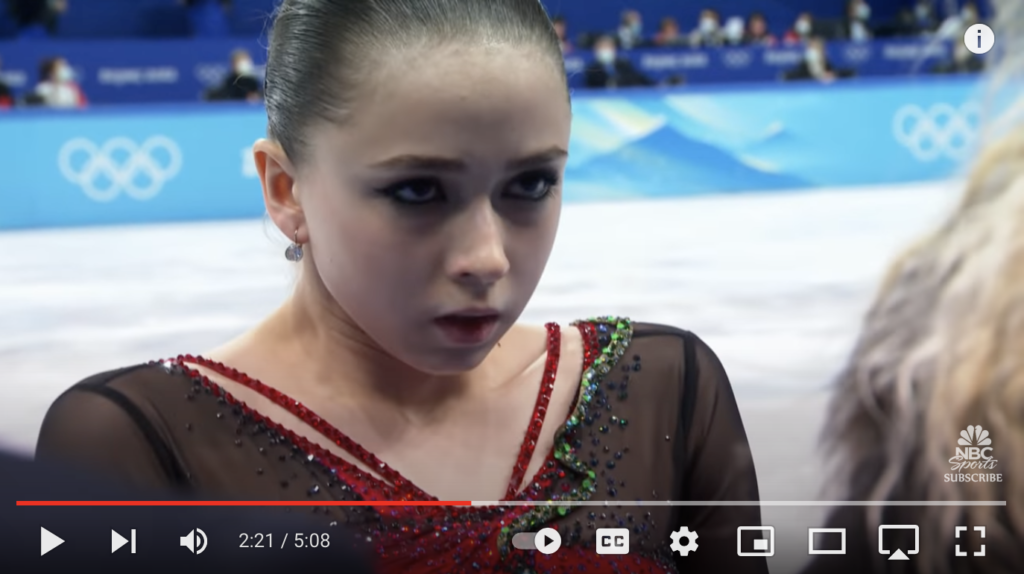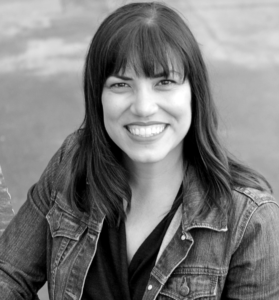In December of 2020, when it became clear we were not going to be returning to normal life any time soon, we purchased a big honking 55-inch 4K TV and settled in for a year of watching movies at home. By Dec. 31, 2021, we had watched 236 movies either together or separately. This is one of series of blog posts about those films.
I always think of “old movies” being movies from the 1930s or 40s – the ones that were old to me when I first got really interested in films in the 1970s or 80s. I mean, my Dear Wife and I had our second date at a campus movie series showing of Casablanca back in the spring of 1981. Casablanca came out in 1942, so it was 39 years old when we first saw it. Which seemed pretty old to 21-year-old us. The movies we’re going to look at today date from 1937 until 1981 – So they will all be older now than “old movie” Casablanca was on that second date… (I guess since Dear Wife and I will have been married 40 years this summer, we are also old…)
When we left off last time, we had been watching an adaptation of Kipling’s The Man Who Would Be King. And we will start off this time with another Kipling story – 1937’s Captain’s Courageous, directed by Victor Fleming and staring Spencer Tracy, Lionel Barrymore, and Melvyn Douglas.
Freddie Bartholomew plays the snotty rich kid who falls off a steam ship crossing the Atlantic while getting sick after drinking too many milkshakes. He is rescued by a Grand Banks cod fishing boat that doesn’t have a radio on it. The boat, of course, can’t take him to port until it’s full up with fish. Tracy won an Academy Award for Best Actor for playing the fisherman who teaches Bartholomew’s character how to be a human being. Mum-in-law watched it with me but thought it was way too sentimental. I, of course, loved it. (I listened to an audiobook of Kipling’s original story not too long ago as well.)
Next up, we have 1981’s Eyewitness, directed by Peter Yates; starring William Hurt, Sigourney Weaver, and Christopher Plummer. Dear Wife and I likely saw this first when it was new, but it’s now 41-years old, so … officially an old movie. Eyewitness is a mystery/thriller, and it doesn’t bear looking too deeply at the plot, having little connection with reality. But it does have a horse stampede in downtown Manhattan, so it’s all good fun. (There is not a current home video version as far as I can tell, but it shows up occasionally on Turner Classic Movies.)
White Christmas, 1954, directed by Michael Curtiz (of Casablanca fame); starring Bing Crosby, Danny Kaye, Rosemary Clooney and Vera Ellen. It also stars the songs of Irving Berlin. Wonderful silliness about a pair of song-and-dance men who meet up with a couple of song-and-dance women who decide to put on a show together. It is in many ways a remake of the Bing Crosby flick Holiday Inn, but unlike Holiday Inn, White Christmas isn’t afflicted by an incredibly racist minstrel show. Great songs, great dancing, enormous fun. (For those interested, it was shot in larger-format VistaVision.)
Bell, Book & Candle, 1958, directed by Richard Quine; starring Jimmy Stewart, Kim Novak, Jack Lemmon, Ernie Kovacs, Hermione Gringold, and Elsa Lanchester. Novak plays a witch who casts a literal spell on Stewart in this supernatural romantic comedy. The joy of this film comes not so much from the silly plot as from seeing all these great performers come together in a story that helped inspire the 1960s TV series Bewitched (as did the 1942 I Married a Witch that we’ll get to later).
We close out this group with the 1976 mystery/comedy Murder By Death, directed by Robert Moore. It was written by playwright Neil Simon and has an all-star cast of Eileen Brennan, Truman Capote, James Coco, Peter Falk, Alec Guinness, Elsa Lanchester (whom we just saw in Bell, Book & Candle!), David Niven, Peter Sellers, Maggie Smith and Nancy Walker. If you’ve seen 1985’s Clue, you’ve essentially seen this movie. Strangers arrive at a house for a mysterious weekend and end up getting murdered one by one. It’s a movie that doesn’t call on you to think to deeply – just enjoy the silly ride. (Note: Contains one of the horrid yellowface performances Hollywood was so fond of.)
Coming Attractions: From 1976’s King Kong to 2019’s Godzilla King of the Monsters















